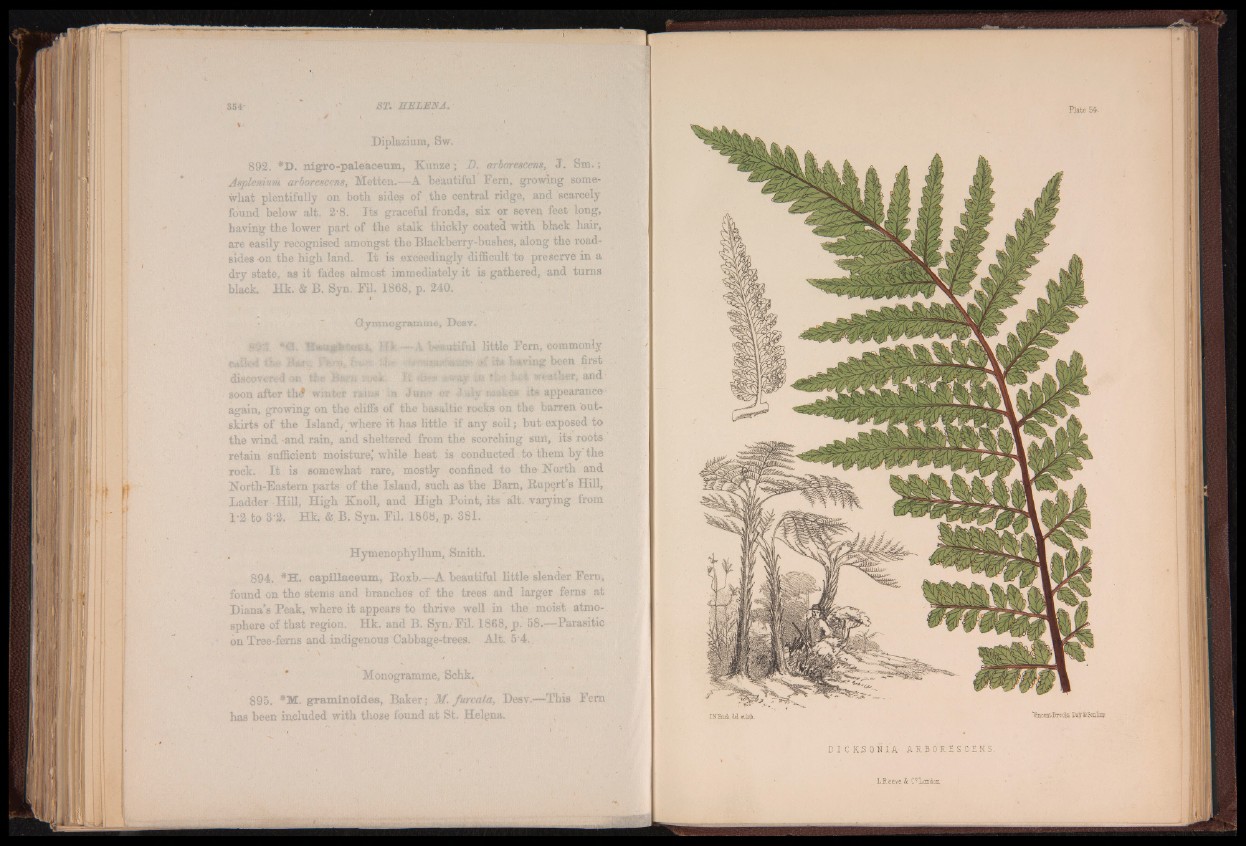
Diplazium,
z e ; D. arborescens, 3. Sm.;
iautiful Fern, growing some-
ie central ridge, and scarcely
:onds, six or seven feet long,
D. nigro-paleaceum,
arborescens, Metten.—
what plentifully on both sidep
found below alt. 2‘8. Its grac | R R | H [ _J ....
having the lower part of the stalk thickly coated with black hair,
re easily recognised amongst the Blackberry-bushes, along the road-
ides on the high land. I t is exceedingly difficult to preserve in a
orv state, as it fades almost immediately it is gathered, and turns
Hk. & B. Syn. Fil. 1868, p. 240. I
Gymnogramme, Desv.
Hk A beautiful little Fern, commonly
ib-r -■ ■.>!’ its having been first
» '¡imk, M HI m S | | w**slwr, and ■
rains' ki Jvmo or. ¿aJy wakes ¡Is appearance
again, growing on the cliffs of the basaltic rocks on the barren outskirts
of the Island/ where it has little if any soil; but-exposed to
the wind -and rain, and sheltered from the scorching sun, its roots
retain sufficient moisture,' while heat is conducted to them by the
rock. I t is somewhat rare, mostly confined to the- North and
North-Eastern parts of the Island, such as the Barn, Rupert’s Hill,
Ladder Hill, High Knoll, and High Point, its alt. varying from
1 2 to 3 2 . Hk. & B. Syn. Fil. 1868, p. 381.
Hymenophyllum, Smith.
894. *H. capillaceum, Roxb.—-A beautiful little slender Fern,
found on the stems and branches of the trees and larger fems at
Diana’s Peak, where it appears to thrive well in the moist atmosphere
of that region. Hk. and B. Syn/Fil. 1868, p. 58.—Parasitic
on Tree-ferns and indigenous Cabbage-trees. Alt. 5-4._
Monogramme, Schk.
895. *M. graminoldes, Baker; M. furcata, Desv.—This Fem
has been included with those found at St. Helena.
'VkcenbBrools INIitch del etlith. Bay&Sonlnrp
D I C KS 0 "N I A A R B O R E S C E N S